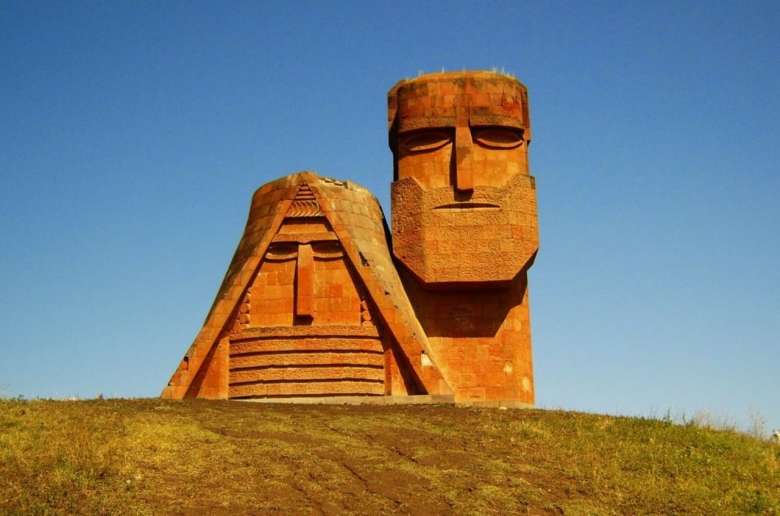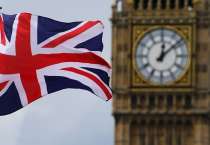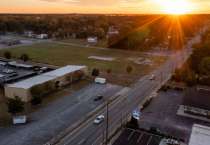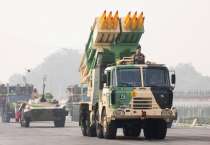Monument Watch: Azerbaijan propaganda machine circulates new theory
Political
On November 11, the official Azerbaijani news agency Azertag released a comprehensive article focusing on the Spitak Khach Monastery situated in the village of Vank within the occupied Hadrut region of Artsakh (Nagorno-Karabakh). Monument Watch, which monitors Artsakh's cultural heritage, informed this, and added as follows:
The article, citing Azerbaijani historian Muhabbat Pashaeva, asserts that during the "years of Armenian occupation," the Armenian side purportedly claimed the "Christian cultural heritage of Karabakh," attempting to present it as Armenian. The Spitak Khach Monastery is cited as an example. Once again, the Azerbaijani news site is propagating a key theme of Azerbaijani state propaganda, asserting that the Christian cultural heritage in Artsakh has no connection to Armenians; it is Albanian-Udi, allegedly appropriated and Armenianized. These well-known themes of the Azerbaijani propaganda machine have been circulated for a considerable time. However, in this article, the Azerbaijani side introduces a new propaganda theme, suggesting that during the Soviet years, Azerbaijani scientists faced "serious obstacles" that prevented them from conducting research in the Karabakh territory. According to Pashaeva, opportunities have now been created for the "objective research of the Caucasian Albanian Christian heritage." The statements from Baku claiming that Azerbaijani scientists did not have the opportunity to research the Christian heritage of Karabakh during the Soviet years are puzzling. Nagorno-Karabakh Autonomous Oblast, which was both a de jure and de facto part of Azerbaijan during that period, was under the direct and indirect control of official Baku. The administrative, economic, financial, and infrastructural levers were in the hands of Baku, and any disagreement with the official viewpoint or policy could lead to immediate on-the-spot repercussions. During the Soviet years, only Azerbaijani scientists had the right to conduct research in the historical territory of Artsakh, and most of them focused on monuments unrelated to the Christian cultural heritage. The scientific collections published by the Academy of Sciences of Azerbaijan during that time show minimal representation of the historical monuments of Artsakh and the Christian heritage. Only a few Azerbaijani scientists showed interest in the history of Artsakh, focusing on a biased "scripture" of the history of Artsakh and Utik, deliberately excluding any Armenian connection. The policy of proofreading and editing gained momentum in the 1950s and became particularly pronounced in the 1960s. The editing of the Christian heritage, culture, and history of Artsakh was carried out by Azerbaijani scholars such as Z. Buniyatov, D. Akhundov, F. Mamedovan, R. Geushev, I. Aliyev, and others. These Azerbaijani scientists developed theoretical foundations for assimilating and distorting the history, culture, and cultural heritage of Artsakh, with a primary focus on Albanianizing Artsakh and its cultural heritage. Rashid Geushev was the only one involved in archaeological research on the "Christian cultural heritage of Karabakh." He conducted "excavations" in Amaras Monastery, Chankatagh, and in his works, he referenced Gandzasar Monastery, Dadivank, and some other monuments. However, he naturally denied their Armenian connection, presenting them as Albanian. Some Azerbaijani scientists also attempted to address the monumental culture of Artsakh, including D. Akhundov, R. Geushev, N. Rzaev, M. Khalilov. Furthermore, in their works, they provided examples and photos of various khachkars [i.e. cross-stones] in Nagorno-Karabakh Autonomous Oblast. This fact alone demonstrates that there were no obstacles for Azerbaijani scientists during the Soviet years. However, for the most part, there was little interest in the cultural heritage of Artsakh, and there were also few researchers. This is the best indicator that it was not interesting or crucial for most Azerbaijani researchers. Moreover, during the same Soviet years, many churches and monasteries in the regions of Kelbajar and Lachin of the SSR were demolished by official Azerbaijan, and dozens of khachkars and tombstones were broken, with no response from Azerbaijani scientists. It should be noted that during the Soviet years, the Azerbaijani authorities created artificial barriers and obstacles only for Armenian researchers, for whom it was dangerous to work in depopulated regions such as Karvachar, Kashatagh, etc. During the Soviet years, only individuals were able to carry out certain works in the Nagorno-Karabakh Autonomous Oblast. It was impossible to talk about Armenian expeditions. During the Soviet years, many of the monuments in the territory of Nagorno-Karabakh Autonomous Oblast were not registered, and documents were not drawn up. The Christian monuments of Nagorno-Karabakh Autonomous Oblast were almost not represented in the tourist brochures of Soviet Azerbaijan, and only the Islamic monuments of Shushi were included in the tourist map of Soviet Azerbaijan. The article separately talks about "Albanian-Udi" scientists, whom the Armenian side allegedly did not allow to conduct research. This observation is puzzling, to say the least. What Albanian-Udi scientists were there who were not allowed to work? The statements of Rafik Danakari, the leader of the Albanian-Udi religious community, contain very dangerous theses particularly that some churches will be conserved, some will be restored, and some will function as museums. One thing must be understood for sure: under the guise of restoration, Armenian inscriptions, crosses, and khachkar compositions, khachkars will be erased, as was done when the Azerbaijani side attempted to "restore and Albanize" monuments during the Soviet years. Among the monuments brought to a "restored and historical appearance" is the church on the top of Vankasar Mountain, from which the Armenian inscriptions and khachkars were scraped off, the surrounding khachkars disappeared, and one was museumized in Aghdam, being forged. The church underwent external changes that were not typical of early Christian architecture in general. Thus, we can see that the Azerbaijani propaganda machine is attempting to portray Azerbaijani scientists as victims, claiming that Armenians prohibited them from exploring Artsakh during the Soviet years.





 Azerbaijan spreads another disinformation on fire from Armenian side
Azerbaijan spreads another disinformation on fire from Armenian side PM, France ex-premier confer about Armenia’s peace treaty, border delimitation process with Azerbaijan
PM, France ex-premier confer about Armenia’s peace treaty, border delimitation process with Azerbaijan Armenia parliament vice-speaker: Peace treaty can be signed tomorrow if Azerbaijan shows constructive approach
Armenia parliament vice-speaker: Peace treaty can be signed tomorrow if Azerbaijan shows constructive approach Armenia sees a real opportunity to finalize and sign draft peace treaty with Azerbaijan
Armenia sees a real opportunity to finalize and sign draft peace treaty with Azerbaijan Defense ministers of Azerbaijan and Georgia met
Defense ministers of Azerbaijan and Georgia met Armenia National Security Service has no facts regarding possible border crossing by Azerbaijan serviceman
Armenia National Security Service has no facts regarding possible border crossing by Azerbaijan serviceman Apple has new policy: Broken iPhone and Apple Watch screens will no longer be replaced free of charge under warranty
Apple has new policy: Broken iPhone and Apple Watch screens will no longer be replaced free of charge under warranty Azerbaijan visit not planned on Armenia PM agenda, spokesperson says
Azerbaijan visit not planned on Armenia PM agenda, spokesperson says Jake Sullivan and Cagatay Kilic discuss Armenia-Azerbaijan peace process
Jake Sullivan and Cagatay Kilic discuss Armenia-Azerbaijan peace process Ankara welcomes sincere efforts of Armenia and Azerbaijan in settlement process: Guler
Ankara welcomes sincere efforts of Armenia and Azerbaijan in settlement process: Guler


















































 Most Popular
Most Popular 
 Bianca Censori chooses another extravagant outfit for shopping in Tokyo
Bianca Censori chooses another extravagant outfit for shopping in Tokyo
























